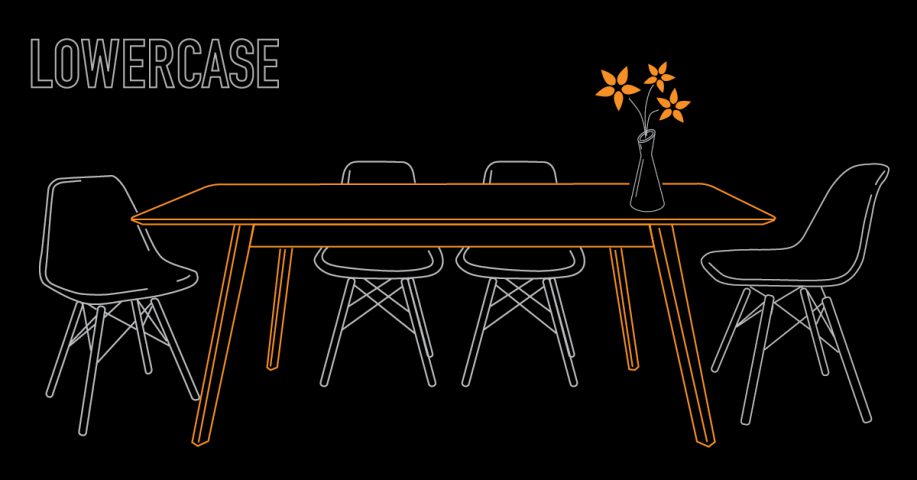Grow Beyond Data


Companies collect more data about customers than ever before yet struggle to build successful customer-centered innovations.
What if more data is the problem, not the solution?
A McKinsey innovation poll shows 84% of global executives report innovation is essential to their growth strategies, yet a staggering 94% are dissatisfied with their innovation performance.
The World Economic Forum adds to this dismal statistic: “While enormous resources are being spent on digital transformation programs … analysis suggests that only 1% of these efforts will actually achieve or exceed their expectations.” 1
What causes so many growth and innovation efforts to miss their mark?
When Data Becomes the Problem
“We know our customers,” claim corporate leaders and managers. That’s important because growth and innovation require creative customer-centered ideas.
However, leaders and managers don’t know as much as they think they do.
With the rise of big data, it’s true that companies collect and analyze more data about their customers than ever before. What if more data is the problem, not the solution?
According to an article co-authored by Clayton Christensen in the Harvard Business Review (HBR), the focus on data and a desire to know more and more about customers is leading organizations in the wrong direction. 2
Here’s the problem: most customer data is structured to show correlations—how two or more variables relate. Yet, as all good statisticians know, correlation is not causation. Just because two things relate does not mean one causes the other.
Companies require executives to identify growth projects and justify investments using data. But when data does not show causation, companies are designing and building solutions on a half-formed foundation. Consider the example of a real estate development company that found a very surprising cause for their slow sales.
Unexpected Insights
When sales for condos aimed at empty nesters were slow, a real estate development company directed their architects to update units based on focus group suggestions. Sales remained slow. In an unusual move, the company bypassed running more ads, holding more open houses, or discounting prices. Instead, they brought in a consultant who talked with recent buyers.
The conversations did not reveal a demographic pattern or key feature that explained their purchases. However, across conversations, buyers talked about their dining room table. In focus groups, prospective customers said they wanted a breakfast bar with no formal dining room. Yet, in conversation, buyers revealed, “As soon as I figured out what to do with my dining room table, then I was free to move.”
Realizing that a dining room table represents family—years of shared meals, holidays, and memories—the company created floor plans with space for a dining room table. They reduced anxiety around downsizing by offering two years of storage and a sorting room for couples to hold furniture as they sifted.
While the company went in thinking they were in the business of new-home construction, they soon “realized we were in the business of moving lives.”
According to HBR, “The new perspective changed everything. The company raised prices by $3,500, which included (profitably) covering the cost of moving and storage … when industry sales were off by 49% and the market was plummeting, the developers had actually grown business by 25%.” 2
The Missing Piece
To identify the customer need that the company should be addressing, Christensen says firms must “home in on the progress that the customer is trying to make in a given circumstance—what the customer hopes to accomplish. This is what we’ve come to call the job to be done.”
In this job to be done view, customers “hire” products or services to do a job and “fire” products and services that don’t accomplish that job.
Underlying every job to be done is a raw customer need. Identifying that need can help your company unleash your most creative ideas. “The raw customer need is permanent; a company’s products are temporary responses.” 3
Let’s break down the real estate development company example to see how this works. Going beyond data to talk with individuals enables a company to:
Expose the real problem
Prospective buyers aren’t sure what to do with their stuff. Uncertainty causes inertia.
Understand the raw customer need
Stuff represents memories and getting rid of stuff feels like getting rid of memories. Customers need a way to process and preserve their memories.
Focus on the job to be done
Ease the transition and soothe anxiety as empty nesters move to the next stage.
Establish causation for data
Low sales are caused by inertia—fueled by emotions triggered by downsizing.
None of this can be found in data.
What Would Airbnb Do?
Most companies today make the mistake of focusing on customers who’ve had a negative experience. To build people-centered growth and innovation for your brand, try diversifying your conversations, observations, and interactions. Stay alert for patterns and insights that emerge across different types of conversations. Use these insights to design the customer experience.
Brian Chesky, Co-Founder of Airbnb, recounts flying coast to coast in the company’s early days to meet with hosts. In conversations, Chesky spotted a pattern—hosts hesitated to allow guests (a.k.a. strangers) into their home. Airbnb listened carefully and then launched several creative solutions, including transforming strangers into real people by having guests add profile photos, where they work and where they went to school. Hosts felt more comfortable opening their homes to the real people they began to see behind the reservations.
“No market research department can substitute for business leaders spending significant time one-to-one with power users, observing their behaviour and exploring the frustrations they have and the compromises they make … going beyond talking and listening to customers to almost living with them … delving into who they are and what they want.” 3
Rediscover Creativity With Design Thinking
Creativity begins the moment you break from data. When you see customers as individuals and empathize with their thoughts, feelings, and experiences, you have entered the first stage of the creative design thinking process. Empathy leads to identifying where your customers’ problem really exists, discovering the raw customer need and defining the job to be done.
These insights provide a stable foundation for ideating, prototyping, testing, implementing and scaling solutions that customers love.
When done right, design thinking can be a powerful yet manageable process. Use it to give structure to creativity and to build insights that go beyond correlation to causation—to identify the ”why” behind your data.
Advance Your Business, Advance Your Brand
To be clear, data still has its place. Analyze your data before you start the creative process to identify themes and build hypotheses. Leverage data during the process to quantify opportunities. Track your data after the process to measure progress.
At the same time, travel a new path to advance your business and your brand through true customer-centered growth and innovation.
While other companies rely on data to fuel unsatisfactory results, what could your company achieve by designing creative solutions that grow beyond data?
— STACY CHYLA BRUCE, Business Design Director
Sources:
1 “The Digital Enterprise: Moving From Experimentation to Transformation,” The World Economic Forum, September 2018.
https://www.weforum.org/reports/the-digital-enterpise-moving-from-experimentation-to-transformation.
2 Clayton M. Christensen, Taddy Hall, Karen Dillon, and David S. Duncan, “Know Your Customers’ ‘Jobs to Be Done’,” Harvard Business Review (September 2016).
3 “The Digital Enterprise: Moving From Experimentation to Transformation,” The World Economic Forum, September 2018, p 16.